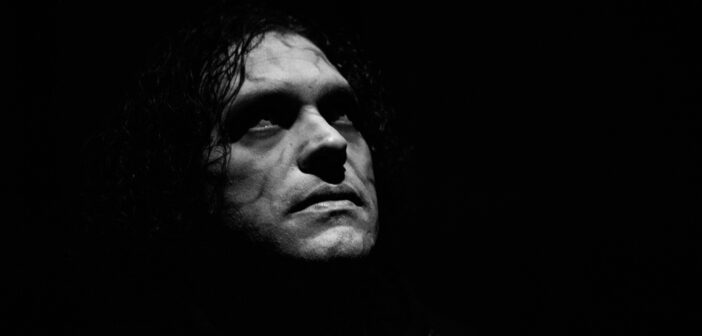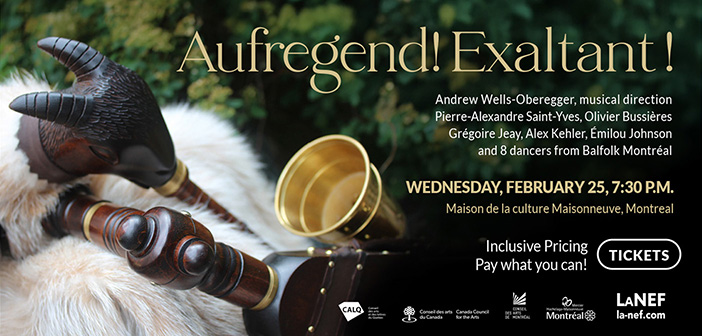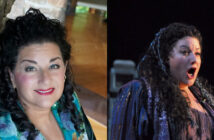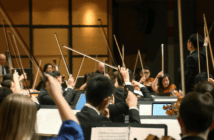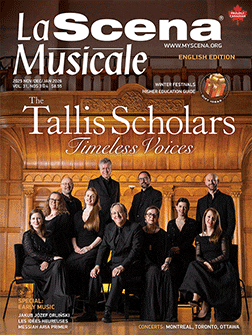Composer Gregg Kallor’s new opera, Frankenstein, premieres at Arizona Opera on Friday the 13th….
Kallor has rightly been commended for his fusion of classical gestures and jazz inflections in works that range from solo piano outings to highly accessible art songs to chamber music to full orchestral works.

Gregg Kallor – photo by David White
He also has a strong affinity for literature –notably but far from exclusively for works that smack of the gothic. Kallor is the creator, for instance, of a tour de force one-woman setting of Poe’s “The Tell-Tale Heart” (check Poe’s story — the gender of his psychopathic protagonist is indeterminate), scored for mezzo, piano and cello, which premiered in a performance in the crypt of New York City’s Church of the Intercession in Harlem in 2016 (as part of the inspired “Crypt Series” produced by classical music promoter Andrew Ousley).
And now, Gregg Kallor has created a monster.
Kallor’s first full-length opera, a musical retelling of Mary Shelley’s seminal tale of scientific transgression and psychological anguish, Frankenstein, is about to enjoy its premiere on – appropriately enough – this coming October 13 at Arizona Opera in Phoenix, with five performances that culminate with an October 22 performance at the company’s Tucson location.
Multi-Tracking
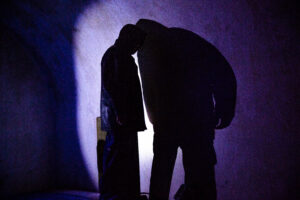
Frankenstein – photo by Kevin Condon
Born in Cleveland, Ohio, and brought up in Connecticut, Kallor recounts his youth as a period of highly motivated if largely instinctive aesthetic syntheses and simultaneities.
“I grew up with a piano in the house,” Kallor recalls. “It was actually my grandmother’s. I think I just naturally gravitated towards it and started taking lessons when I was around six. I caught the jazz bug a little later, added jazz lessons and pursued both classical and jazz at the same time.”
After high school, Kallor was initially enthusiastic about going to conservatory, until he encountered institutional biases that clashed with his own broad canvas of interests.
“I was very reluctant to give up the liberal arts path,” Kallor recalls. “And I had grown up performing both classical music and jazz. Conservatory was the first time in my life I was told ‘you really need just one.’ So I decided to take a break from music school.”
Taking his own education and musical development in hand, Kallor fortuitously met “some incredible musicians,” which led to gigs on the side and money to continue private lessons until he eventually moved to New York – an expanding experience which, Kallor says, “I consider to be my music grad school.
Small Talk at the Keyboard
Reflecting on what he considers that artificial segregation of classical music discipline and jazz praxis in some quarters, Kallor asserts that, to the contrary, “they’re two sides of the same coin.”
“It’s crazy to me that improvisation is no longer a part of what’s being called classical music,” Kallor explains. “All of my heroes did it! Bach was maybe one of the greatest improvisors of all time. Mozart, Beethoven – they all did it. It was par for the course. And I think the freedom to improvise informs how I approach standard classical music, and vice versa.”
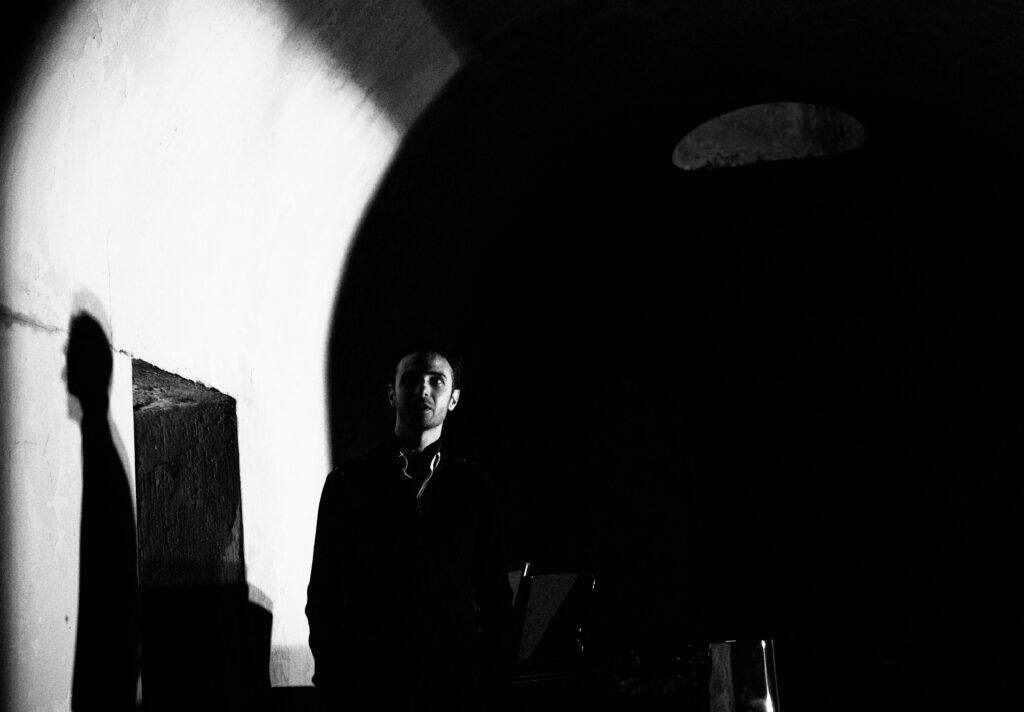
Gregg Kallor – photo by Kevin Condon
Kallor fondly recalls the genteel iconoclasm of his favorite early piano teacher, Sophia Rosoff, who encouraged young Gregg to “improvise his way into a new piece,” at least in the early stages of taking possession of it, transiting seamlessly from an initially freeform keyboard assay into the actually notated details of the music – a process Kallor feels makes a performer that much more a fully authorized participant in the work.
“Call it ‘musical small talk,’” Kallor says, improvising what feels like the perfectly apt phrase.
In the Beginning…
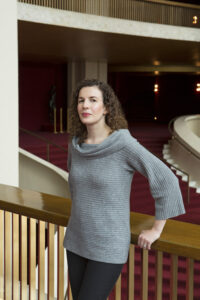
Sarah Ina Meyers
Soon after the premiere of their work on “The Tell-Tale Heart,” Kallor was having lunch with director Sarah Ina Meyers, brainstorming ideas for future collaboration. Meyers asked Kallor if he’d ever read the Mary Shelley novel Frankenstein.
“I don’t want to get caught in this gothic trap,” Kallor blurted out. “I don’t want to get pigeonholed.”
But Meyers was persistent. “I think it’s going to sing to you,” she said. As it turned out, she was so right.
“It blew my mind,” Kallor says of having read the novel. “It’s just one of my absolute favorite works of literature now – such a gorgeous, heartbreaking story. Epic. Intimate. It has resonated for so many people across every single background for over 200 years because there’s not a person who doesn’t in some way identify with being the ‘other,’ and also seeing someone else as ‘other.’”
The Creator’s Creator
Mary Shelley, a remarkable example of 19th-Century social rebel and adventuress, was barely more than 18 years old when she conceived Frankenstein, famously prompted by a friendly “ghost story” writing challenge among Mary; her lover, the poet Percy Bysshe Shelley; Mary’s stepsister, Claire (that year’s lover of George Gordon Lord Byron); a literary camp-follower of Byron’s named Dr. John Polidori; and the celebrated and controversial Lord Byron himself — all of whom were summering together in an unusually rainy Lake Geneva, Switzerland, in 1816.
Mind of a Monster
And only Mary and Polidori actually followed through — with the latter penning a novella called “The Vampyre” which featured a character, Lord Ruthven, largely regarded as the model for Bram Stoker’s Count Dracula decades later; and Mary Shelley, arguably singlehandedly launching the genres of both sci-fi and neo-realist gothic horror.
Unlike the tale as told by 1930s Universal Studios, in which the monster (inadvertently implanted with a madman’s brain) is essentially a massive ganglion of congenitally damaged goods, Shelley’s Creature is a remarkably sensitive and precocious being, brought to ruin not via biology but by the soul-curdling effects of rejection.
More Sinned Against Than Sinning…

Frankenstein – photo by Kevin Condon
Tellingly, Shelley subtitled her novel “The Modern Prometheus,” invoking the figure out of Greek mythology credited with having stolen fire from the gods to give to man, and even – in some versions of the myth – having actually fashioned humanity out of clay. Thus, Shelley might be seen as subtly positioning Victor Frankenstein in the role of a minor creator god and, at the same time, inverting the classic account of human rebellion from God (as told, for instance, in John Milton’s Paradise Lost, which is referenced throughout the novel) with the creator as the abandoner and the created as the traumatized abandoned.
“There’s a wonderful moment in Paradise Lost where Eve sees her reflection for the first time,” Kallor notes. Indeed, Eve falls in love with that reflection, thus activating her besetting moral weakness – vanity.
“Shelley takes that moment and transforms it,” Kallor observes. “When the Creature first sees his own reflection in a stream, he is horrified to realize how others are seeing him.”
“Frankenstein is the story of how society created a monster out of the Creature,” says Kallor. “Made him a murderer. Shelley doesn’t defend or justify his actions, but she really goes to great lengths to show context, and that’s something that I hope people take away from the story.”

